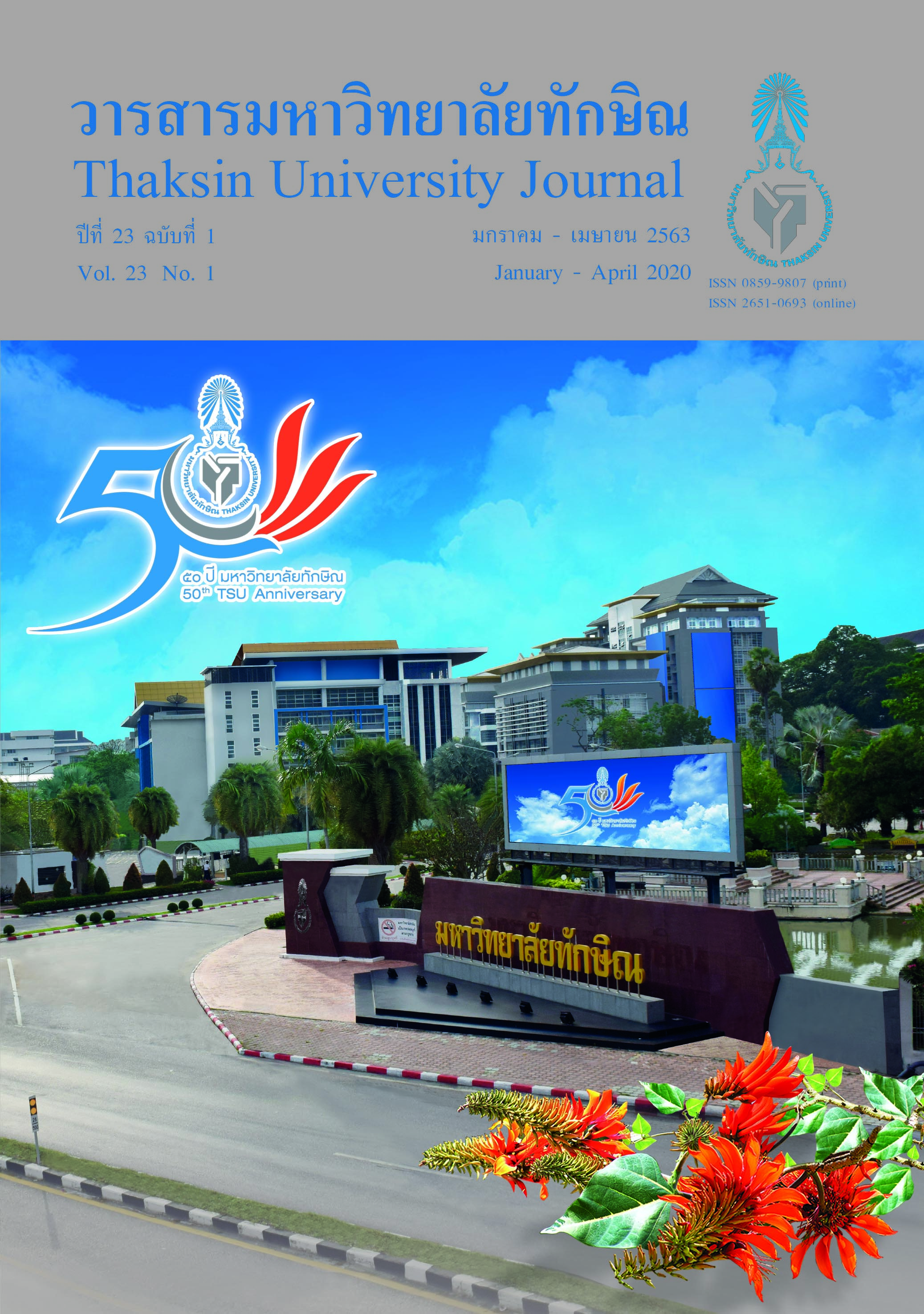การประยุกต์ใช้พอลิไฮดรอกซีอัลคาโนเอตเป็นแหล่งคาร์บอนเพื่อบำบัด สารประกอบไนโตรเจนในระบบเพาะเลี้ยงสัตว์น้ำแบบหมุนเวียน
Main Article Content
บทคัดย่อ
สารประกอบไนโตรเจนในระบบเพาะเลี้ยงสัตว์น้ำเกิดจากของเสียจากการขบั ถ่าย อาหาร และซากของสิ่งมีชีวิตการบำบัดสารประกอบไนโตรเจนนิยมใช้กระบวนการทางชีวภาพโดยตรึงแบคทีเรียบนวัสดุแบคทีเรียจะนำสารประกอบไนโตรเจนเข้าไปในเซลล์และเปลี่ยนเป็นสารอื่นเพื่อสร้างพลังงานไว้ใช้ในการเจริญเติบโต กระบวนการดีไนตริฟิเคชันเป็นหนึ่งในกระบวนการทางชีวภาพในการบำบัด สารประกอบไนโตรเจน จุลินทรีย์จะใช้ไนเทรตเป็นตัวรับอิเล็กตรอนและใช้สารอินทรีย์ (แหล่งคาร์บอน) เป็นตัวให้อิเล็กตรอนในกระบวนการหายใจ ซึ่งมีข้อเสีย คือ การเติมสารอินทรีย์ในปริมาณน้อยส่งผลให้เกิดการสะสมของไนเทรต แต่หากเติมในปริมาณมากส่งผลให้สารอินทรีย์ในน้ำมีปริมาณเพี่มขึ้น ดังนั้นจึงต้องมีการควบคุมโดยผู้เชี่ยวชาญพอลิเมอร์ย่อยสลายได้ทางชีวภาพ เช่น พอลิไฮดรอกซีอัลคาโนเอต จึงเป็นทางเลือกหนึ่งในการหลีกเลี่ยงปัญหาดังกล่าว เนื่องจากมีข้อดี คือ ย่อยสลายได้ทางชีวภาพ สามารถใช้เป็นตัวกรองชีวภาพและเป็นแหล่งคาร์บอนไดโ้ ดยไม่มีผลกระทบต่อปริมาณไนโตรเจนในน้ำบทความวิจัยนี้จึงกล่าวถึงการประยุกต์ใชพ้ อลิไฮดรอกซีอัลคาโนเอตเป็นแหล่งคาร์บอนเพื่อบำบัดสารประกอบไนโตรเจนในระบบเพาะเลี้ยงสัตว์น้ำแบบหมุนเวียน
Article Details

อนุญาตภายใต้เงื่อนไข Creative Commons Attribution-NonCommercial-NoDerivatives 4.0 International License.
เอกสารอ้างอิง
Department of Fisheries. (2018). Fisheries economic situation in 2017and 2018 (Online). Retrieved 5 December 2018 from https://www.fisheries.go.th/strategy/User Files/files/ 16–2–61.pdf.
Naik, J.K., & Ananda Rao, K.G. (2014). Fish farming and fish products. India: Roshan Offset Printers.
Jobling, M., & Kadri, S. (2012). Aquaculture and behavior. Malaysia: Vivar Printting Sdn Bhd.
Mirzoyan, N., Tal, Y., & Gross, A. (2010). Anaerobic digestion of sludge from intensive recirculating aquaculture system: Review. Aquaculture, 306(1–4), 1–6.
Dauda, A. B., Ajadi, A., Tola–Fabunmi, A. S., & Akinwole, A. O. (2018). Waste production in Aquaculture: Sources, components and managements in different culture systems. Aquaculture and Fisheries, 4(3), 81–88.
Schreier, H. J., Mirzoyan, N., & Saito K. (2010). Microbial diversity of biological filters in recirculating aquaculture systems. Current Opinion in Biotechnology, 21(3), 318–325.
Li, F., Feng, J., Zhou, X., Xu, C., Jijakli, M.H., Zhang, W., & Fang, F. (2019). Impact of rice-fish/shrimp co-culture on the N2O emission and NH3 volatilization in intensive aquaculture ponds. Science of the Total Environment, 655, 284–291.
Zhu, G., Peng, Y., Li, B., Guo, J., Yang, Q., & Wang, S. (2008). Biological removal of nitrogen from wastewater. Reviews of Environmental Combination and Toxicology, 192,159–195.
Zou, S., Guan, L., Taylor, D. P. Kuhn, D., & He, Zhen. (2018). Nitrogen removal from water of recirculating aquaculture system by a microbial fuel cell. Aquaculture, 497, 74–81.
Menasveta, P., Panritdam, T., Sihanonth, P., Powtongsook, S., Chuntapa, B., & Lee, P. (2001). Design and function of a closed, recirculating seawater system with denitrification for the culture of black tiger shrimp broodstock. Aquacultural Engineering, 25(1), 35–49.
Gutierrez-Wing M. T., Malone, R. F., & Rusch, K. A. (2012). Evaluation of polyhydro -xybutyrate as a carbon source for recirculating aquaculture water denitrification. Aquacultural Engineering, 51, 36–43.
Boley, A., Műller, W.R., & Haider, G. (2000). Biodegradable polymers as solid substrate and biofilm carrier for denitrification in recirculated aquaculture system. Aquacultural Engineering, 22, 75–85.
Raza, Z. A., Abid, S., & Banat, I. M. (2018). Polyhydroxyalkanoates: Characteristics, production, recent developments and applications. International Biodeterioration & Biodegradation, 126, 45–56.
Mozejko-Ciesielska, J., & Kiewisz, R. (2016). Bacterial polyhydroxyalkanoates: still fabulous? Microbiological Research, 192, 271–282.
Braungg, G., Lefebvre, G., & Genser, K. F. (1998). Polyhydroxyalkanoates, biopolyesters from renewable resources: physiological and engineering aspects. Journal of Biotechnology, 65(2–3), 127–161.
Chan, C.M., Vandi, L.J., Pratt, S., Halley, P., Richardson, D., Werker, A., & Laycock, B. (2018). Composites of wood and biodegradable thermoplastics: a review. Polymer Reviews, 58(3), 444–494.
Qiu, T., Liu, L., Gao, M., Zhang, L., Tursun, H., & Wang, X. (2016). Effects of solid-phase denitrfication on the nitrate removal and bacterial community structure in recirculating aquaculture system. Biodegradation, 27(2–3), 165–178.
Zhu, S.M., Deng, Y.L., Ruan, Y.J., Guo, X.S., Shi, M.M., & Shen, J.Z. (2015). Biological denitrification usingpoly( succinate) as carbon source and biofilm carrier for recirculating aquaculture system effluent treatment. Bioresource Technology, 192, 603–610.
Pérez-Fuentes, J.A., Hernández-Vergara, M.P., Pérez-Rostro, C.L., & Foge, I. (2016). C: N ratios affect nitrogen removal and production of Nile tilapia Oreochromis niloticus raised in a biofloc system under high density cultivation. Aquaculture, 452, 247–251.
Sangkharak, K. (2009). The production of polyhydroxyalkanoate by microorganism. Thaksin University Journal, 12(2), 75–89.
Han, F., Ye, W., Wei, D., Xu, W., Du, B., & Wei, Q. (2018). Simultaneous nitrification- denitrification and membrane fouling alleviation in a submerged biofilm membrane bioreactor with coupling of sponge and biodegradable PBS carrier. Bioresource Technology, 270, 156–165.


